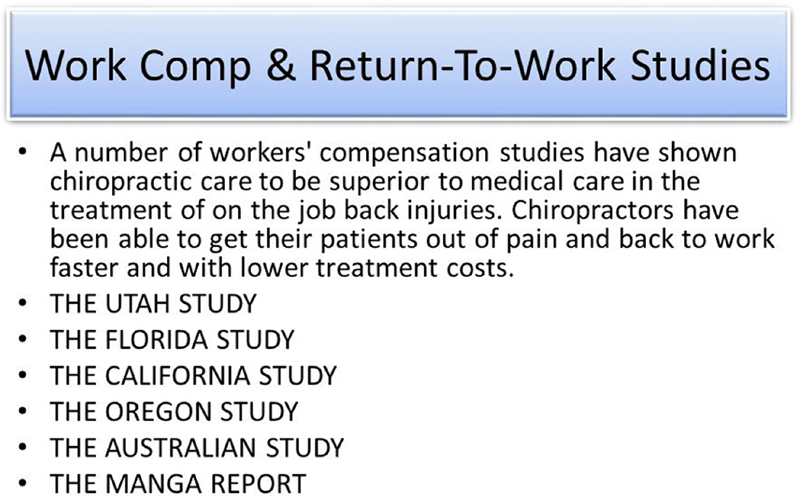Symptomatic Classification of Whiplash Injury and the Implications for Treatment
SOURCE: J Orthopaedic Medicine 1999; 21 (1): 22–25
Khan S, Cook J, Gargan M, Bannister G
University Department of Orthopaedic Surgery,
Bristol, UK
Gargan and Bannister are renowned orthopedic trauma researchers from the Department of Orthopedic Surgery, John Radcliffe Hospital in Bristol, Oxford, England. In 1994, they published a paper in the European Spine Journal on the recovery rate of patients with whiplash injuries, and discovered that IF a patient was still symptomatic after three months, there was almost a 90% chance they would remain so. [1]
In 1995 they co-published a study with Woodward [2] that found that 93% of the chronic whiplash patients they studied experienced significant improvements with chiropractic care.
Chiropractic care in this study consisted of spinal manipulation, PNF and cryotherapy. Most of these 28 patients had already had prior medical treatment with NSAIDs, soft collars and physiotherapy.
Their third study reviewed conventional medical treatment for whiplash care, finding that it “was disappointing.”
The authors also found that:
“Chiropractic is the only proven effective treatment in chronic cases.”
The objective of their new study was to determine which type of chronic whiplash patient would benefit the most from chiropractic treatment. [3]
They separated patients into one of 3 groups:
Group 1: patients with “neck pain radiating in a ‘coat hanger’ distribution, associated with restricted range of neck movement but with no neurological deficit.”
Group 2: patients with “neurological symptoms, signs or both in association with neck pain and a restricted range of neck movement.”
Group 3: patients who described “severe neck pain but all of whom had a full range of motion and no neurological symptoms or signs distributed over specific myotomes or dermatomes.” These patients also “described an unusual complex of symptoms,” including “blackouts, visual disturbances, nausea, vomiting and chest pain, along with a nondermatomal distribution of pain.”
The patients underwent an average of 19.3 adjustments over the course of 4.1 months (mean). The patients were then surveyed and their improvement was reported:
Group 1
43% Improved by Two Symptom Grades
13% Improved by One Symptom Grade
6% No Improvement
24% Improved by Two Symptom Grades
24% Improved by One Symptom Grade
28% No Improvement
9% Improved by Two Symptom Grades
18% Improved by One Symptom Grade
64% No Improvement
9% Got Worse
The exaggerated group (group 3) was the most challenging and, the only group where a small percentage worsened. The good news is, the number of cases that responded well to chiropractic treatment (groups 1 & 2) far out number those that don’t (group 3). Hence, most patients with whiplash injuries should consider chiropractic as their first choice of health care provision.
There is more like this at:
REFERENCES:
1. The Rate of Recovery Following Whiplash Injury
Eur Spine J. 1994; 3 (3): 162–164
2. Chiropractic Treatment of Chronic ‘Whiplash’ Injuries
Injury 1996 (Nov); 27 (9): 643–645
3. A Symptomatic Classification of Whiplash Injury and the Implications for Treatment
Journal of Orthopaedic Medicine 1999; 21 (1): 22–25





Very useful study. Thanks! It validates what we see in our chiropractic practices every day.
So, did they say what helps out the third group the most?
Awesome information. I love it that more and more people are learning the essentials of chiropractic.